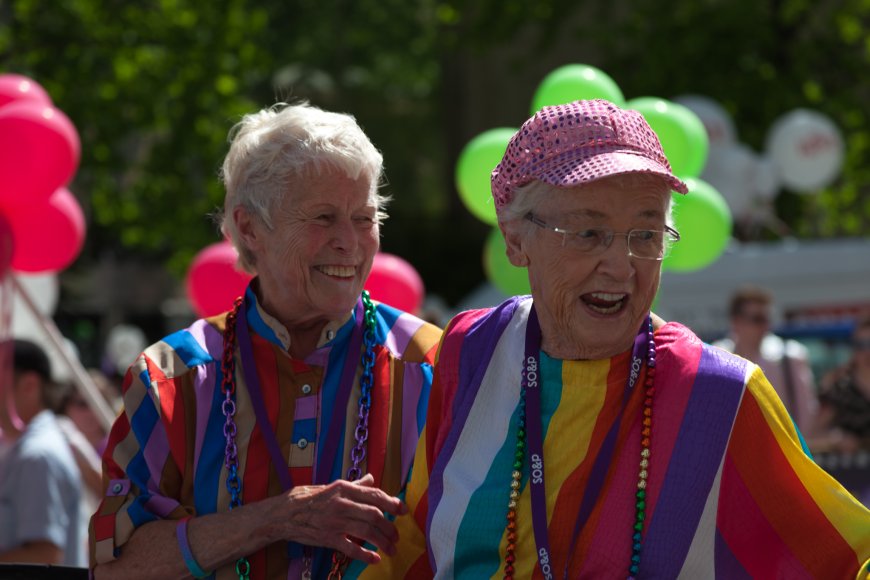June 26 marks the 10-year anniversary of nationwide marriage equality in the United States, and hundreds of thousands of queer couples have been making the most of it.
Nearly 600,000 same-sex couples have been married in the United States since the landmark 2015 Supreme Court ruling in Obergefell v. Hodges, according to a
report published by the Williams Institute at UCLA School of Law. The historic ruling required states to issue marriage licenses to same-sex couples across the nation and recognize marriages performed elsewhere at a time when 15 states had yet to achieve marriage equality.
In total, there are now 823,000 married same-sex couples in the United States — twice as many as there were in 2014, just one year before the Obergefell ruling, according to the report.
Furthermore, same-sex couples wasted little time joining the ranks of Americans who are married: Married couples have made up the majority of partnered same-sex couples since 2016, and about 60% of cohabiting same-sex couples are married — up from 43% in 2014.
Unsurprisingly, the ruling has had the greatest impact on southern states, none of which had achieved marriage equality by the time the Obergefell ruling was handed down: From 2014 to 2023, there was a 21% increase in same-sex married couples in the south, compared to 16% in the west, 15% in the midwest, and 11% in the northeast.
All 15 states that had yet to win marriage equality by the time of that ruling were in the south and midwest. To this day, more than half of same-sex couples reside in states with statutes or constitutional amendments prohibiting marriage equality. In 2022, President Joe Biden
signed the Respect for Marriage Act, which formally repealed the Defense of Marriage Act and stipulated that marriages performed elsewhere must be recognized across the US.
That legislation was passed and signed into law amid concerns about the legal future of marriage equality. That same year, Supreme Court Justice Clarence Thomas wrote in a concurring opinion that the Supreme Court “should reconsider all of this Court’s substantive due process precedents, including Griswold, Lawrence, and Obergefell," referring to rulings establishing rights to contraception, sodomy, and marriage equality, respectively.
Many states have also moved to codify marriage equality in recent years. Last year, voters in California, Colorado, and Hawaii became the latest to repeal bans on same-sex marriage, and earlier this month, the Delaware Senate approved legislation to codify same-sex marriage.
As of June 2025, more than two dozen states still maintained statutes and/or constitutional amendments barring marriage equality — though those policies have been with 433,000 married same-sex couples residing in those states. Among those 433,000 married couples, there are approximately 163,000 children.
The report also cited some notable demographic takeaways about same-sex couples. Women make up 53% of married same-sex couples vs. 47% who are men. About 22% of married same-sex couples are not US-born and around 34% of individuals who make up married same-sex couples are people of color, which is almost exactly the same number as straight couples (33%). Meanwhile, twice as many same-sex couples are interracial (29%) as straight couples (14%).
Marriage equality's economic impact on the households of same-sex married couples is also evident. Married same-sex couples have 18% higher income than unmarried same-sex couples and about 72% of married same-sex couples own their own home, while 49% of unmarried same-sex couples own homes.
The numbers, however, vary when evaluating gender-based differences among same-sex couples. Married men in same-sex relationships have a median household income of $142,000 compared to $113,000 for married women.
The gender-based differences are also seen among married same-sex couples who have children. While 24% of female same-sex couples have their own children, only 8% of married male same-sex couples have their own children.
There are 299,000 children under the age of 18 who live in households led by same-sex couples, and 22% of married same-sex couples have adopted children — far more than the 3% of different-sex couples. Furthermore, 3% of married same-sex couples have a foster child compared to 0.3% for married different-sex couples.


 Mark
Mark 





